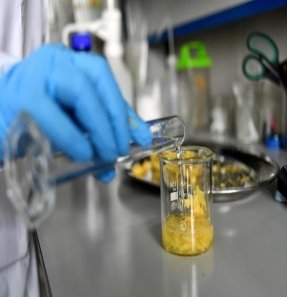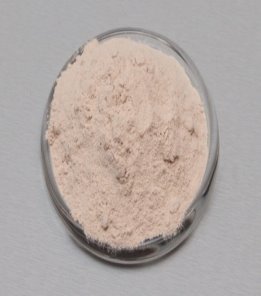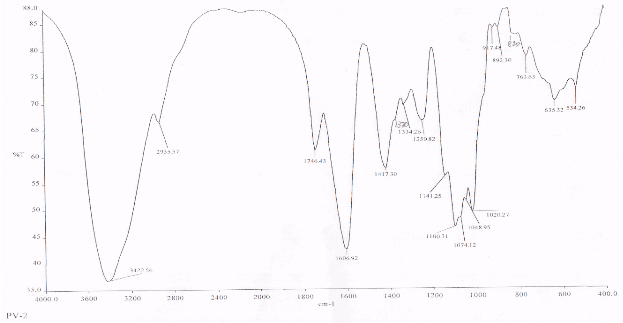One of the urgent problems is the rational use of secondary raw materials during the current food shortage. Many practical and theoretical studies should be done by scientists to solve these problems. At the level of Uzbekistan, there are currently many campaigns in the food sector, in particular, practices of rational use of secondary raw materials in food production. As a result of the complex processing of raw materials in the food industry, it was possible to get a lot of waste. Studies on the extraction of pectin and starch from apple pomace, corn syrup, and sunflower turban were carried out in laboratory conditions.
Keywords: food, safety, UN, safe products, food products, waste, secondary products, threats, pectin, starch.
It is known that the Republic of Uzbekistan is a country that specialized in agriculture, with favorable climatic conditions suitable for obtaining high yields of almost all types of agricultural crops. In the absence of large losses in the process of growing and storing agricultural products, this amount of land would be enough to easily provide the population of the Republic with food and technical raw materials and to export a part of the products.
Increasing the range of products and wide use of local raw materials in the production of canned goods and their export to the world market is connected with the deepening of the reform in the economy of Uzbekistan and the product localization program.
In the next 15–20 years, scientists from Ukraine, Russia, Kyrgyzstan, Tajikistan, and Uzbekistan — are conducting a number of scientific research to create technologies for extracting pectin substances from plants and to study the physicochemical properties of this polysaccharide. Pectin is not only used in the food industry for the production of dairy products, but it is also widely used for its good ability to release heavy metals and radioactive nucleotides from the human body.
Pectin substances belonging to the group of polysaccharides are present in almost all plants in greater or lesser amounts. It is located in the cytolytic membrane of the plant cell together with polysaccharides, cellulose, lignin, cellulose, and hemicelluloses.
Pectin is derived from the Greek word «pectus», which means «a substance that forms a firmness under certain conditions or with this level of hardness».
The plant cell membrane mainly consists of pectin and salts of pectic acid formed with alkaline-earth metals — pectates. In the process of hydrolysis, protopectin forms salts and soluble pectin with alkaline-earth metals of the hydrolyzing acid. As a result, the plant membrane breaks down and the substances in the cytoplasm are released into the environment, forming the pectocellulosic shell of the cell and serving as a cementing substance, thus ensuring the integrity of the cell. The hydrolysis of pectin resembles proteins.
International expert research on food safety has revealed that a complex situation has arisen in the world and some of its regions. Today, this problem is considered one of the most urgent and serious threats to the world community.
According to the Food and Agriculture Organization of the United Nations and the World Health Organization, currently more than 840 million people in the world, that is, almost one in eight people, are undernourished, and more than 30 % of the world's population is undernourished. is experiencing. The gap between the rapidly increasing population of the earth and the limited growth potential of food production is the main reason why the issue of ensuring food security is becoming more acute every year. is deepening in the regions.
At the level of Uzbekistan, there are currently many campaigns in the food sector, in particular, practices of rational use of secondary raw materials in food production. As a result of the complex processing of raw materials in the food industry, it was possible to get a lot of waste. Studies on the extraction of pectin and starch from apple pomace, corn syrup, and sunflower turban were carried out in laboratory conditions.


The purpose and tasks of the work:
to study the process of extracting pectin from secondary raw materials in laboratory conditions using the fungus Trichoderma harzinium by enzymatic method;
— application of the extraction method that ensures obtaining pectin that meets the standard requirements;
— creation of moderate conditions for precipitation of pectin substance from the extract, drying and grinding process.
Research object and subject: The research object is the extraction of food pectin from secondary raw materials of food products, such as apple pulp, sunflower pulp, and sunflower pulp using the fungus Trichoderma harzinium.
Research methods and methods: enzymatic treatment of the object, aqueous extraction, alcohol extraction, paper chromatography.
The level of scientific novelty of the research results: in order to maximally separate pectin collected from secondary raw materials, enzymatic treatment of this pectin source was proposed, researched in laboratory conditions, results were obtained.
Practical importance and application of the research results: a technology for obtaining powdered food pectin, which meets the requirements of the confectionery sector of the food industry in terms of its physicochemical parameters, was created from sunflower bran, which is an agricultural waste. If this technology is put into practice, a product will be obtained that replaces imports used in food production enterprises, and the technology of efficient use of waste will be introduced.
There are two different methods of obtaining pectin, fractional extraction of pectin substances and rapid production of the whole extract. The technique of first method is that the finely ground plant material to be analyzed is extracted in a water bath with ten times the amount of 95 % ethyl alcohol to remove sugar, wax, tar, etc. The precipitate is filtered from the solutions, and the mixture of 95 % alcohol and ether is washed again with ether and dried at 85°C. The material is then placed in a container equipped with a glass filter and filled with extraction liquid preheated to the required temperature. Water or 0.1 N hydrochloric acid is often used. According to the second method, 100 g of finely ground test material is placed in a three-liter flask and poured with the same amount of hot water. The contents of the flask are heated to 88–90°C in a water bath, after which sulfuric acid is added to its final concentration of 0.4–0.6 %. The extraction process lasted 60 minutes. 88–90°С. After that, the flask is removed from the water bath and quickly cooled with a stream of cold water. Then distilled water is added to it up to the 2-liter mark, the contents are mixed and cooled. due to the need to dry and extend the shelf life of pectin-containing raw materials before processing.
Physic-chemical parameters of pectin obtained from different raw materials
|
Indications |
Pectin | ||
|
Sunflower |
Apple truffle ISO 111–8-82 |
Sugar beet tuff ISO 18–62–72 | |
|
Moisture, % |
8,1±0,3 |
8,0±0,2 |
12,0±0,4 |
|
Ash content, % |
0,40±0,02 |
*** |
3,2±0,12 |
|
Pure pectin content, % |
82,5±1,2 |
*** |
70,0±1,4 |
|
Degree of acetylation, % |
0,7±0,007 |
0,18±0,009 |
0,3±0,005 |
- For extraction of water-soluble pectin, it was found that the maximum amount of pectin can be extracted when the ratio of 0.05 % solution of hydrochloric acid to raw materials is used, that is, the hydro module is 1:12.
- It was shown that the extract can be maximally cleaned of ballast substances when the separation factor is centrifuged at Kr=1200.
- Precipitation of pectin from the extract contains 0.5 % hydrochloric acid 96 % h. The feasibility of using ethanol was shown.

References:
- Q. O. Dodayev., I. M. Mamatov "Design basics and technological calculations of food canning enterprises" — Tashkent "Economics — finance" 2006, page 208.
- Shakhov S. V., Ryazanov A. N., Shubkin S.Yu., Korysheva N. N., Matvienko N. A. — Development of pectin production technology based on resource-saving processing of vegetable raw materials // Food safety: scientific, personnel, and information support. Part 2.: Mat. International sci.-tech. conf. / Voronezh state university of engineering technology. — Voronezh: VGUIT, 2014. — S. 264–265.

